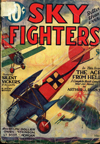“Sky Fighters, July 1935″ by Eugene M. Frandzen
Eugene M. Frandzen painted the covers of Sky Fighters from its first issue in 1932 until he moved on from the pulps in 1939. At this point in the run, the covers were about the planes featured on the cover more than the story depicted. For the June 1935 cover, Mr. Frandzen features the Spad 22 and Spad 13 C1!
The Ships on the Cover
THE cannon ship used during 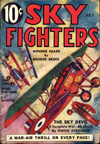 the World War did not necessarily have to be one type of plane. Any ship having a “V” type engine with a geared propeller could do the trick. The geared prop was above the crank shaft at the front of the engine, therefore above the center of the round radiator in the Spad. The hub of the propeller was made hollow just large enough to clear the sides of the muzzle of the 37 millimeter cannon which protruded about two inches. In the accompanying drawing this is clearly shown.
the World War did not necessarily have to be one type of plane. Any ship having a “V” type engine with a geared propeller could do the trick. The geared prop was above the crank shaft at the front of the engine, therefore above the center of the round radiator in the Spad. The hub of the propeller was made hollow just large enough to clear the sides of the muzzle of the 37 millimeter cannon which protruded about two inches. In the accompanying drawing this is clearly shown.
The ship with the complicated bracing in the foreground of the cover is the Spad 22, one of the little known crates of the war. It rated a 220 h.p. Hispano-Suiza motor with a geared prop which could accommodate the cannon. The Spad zooming up in the lower background is the Spad 13 C1 with geared prop. There were plenty of these “cannon ships” tried out from time to time and words flew hot and heavy from pilots who used this new gun arrangement for and against the stunt.
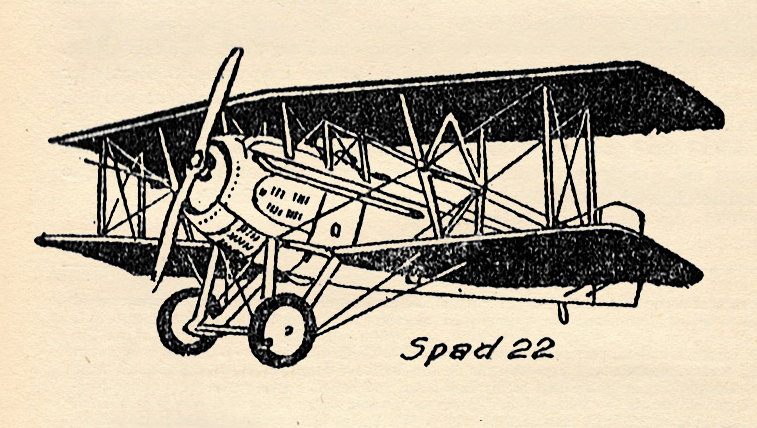
The Original Cannon
The original 37 millimeter cannon, the type the great French ace Guynemer used to down his forty-ninth to fifty-second victims, had to be fed by hand. Each seven-inch shell weighing about one pound had to be dropped into the breach of the gun. This took about three seconds in which time a pair of Vickers guns could churn out around fifty slugs, one of which might find a vulnerable spot in the enemy or his ship. But said enemy ship in three seconds could vary its position about 600 feet which is about equal to a shooting gallery target being reduced from the size of a wash tub to an aspirin tablet, a comparison which you fans with air guns or .22 caliber rifles Will appreciate.
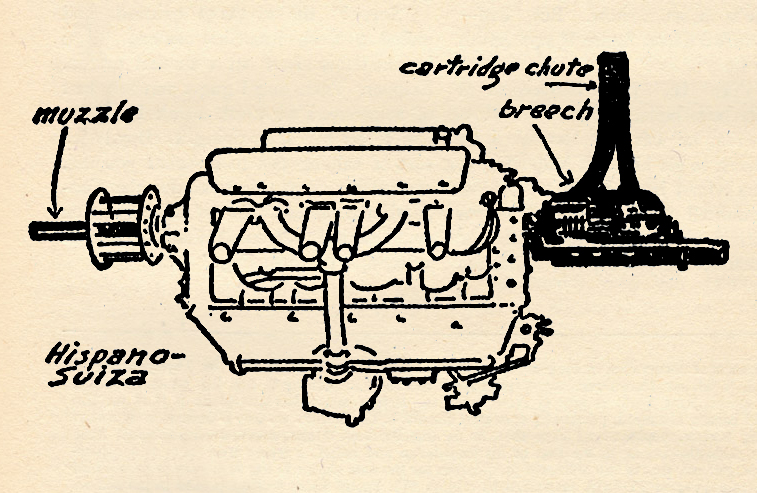
On the other hand a Vickers slug might smack into a strut longeron, engine or even the gas tank, if it was rubber housed and not cause any serious damage; but let one of the one-pounder shells which explodes on impact connect with about any part of the enemy plane and the fight is over. The non-explosive one-pounder shell will knock a plane down in from one to three hits. Then there was a “fireworks” shell which was designed to set the target on fire, also a shell similar to a shotgun shell, which when loaded with buckshot would tear a wing to pieces.
A versatile gun, that cannon, and one which certainly did plenty of damage to the Germans.
Later Models Weighed More
The later cannon was semi-automatic, using the recoil, which was eight inches or more, depending on the muzzle velocity, to eject the used shell and slide a new one into the gun chamber. Guynemer’s cannon weighed about 100 pounds. The later models, 150 pounds or more. So put this added weight into a plane with a given speed and load, is to cut down its speed and put it at a disadvantage in a fight. To overcome this, the ammunition supply was limited or the fuel supply cut down which naturally decreased the cruising range. There were plenty of arguments for this weapon but also a few plain and fancy arguments against it.
Those two Albatross D5s zipping down on the foremost Spad are churning out four streams of slugs at a range which only amateurs would fire. The Spad 13 C1 coming up under them has a better range at a good angle. Not only are the bets on the Spads to come out with flying colors but when those explosive shells from the one pounder connect with the German ships, only one shell is necessary for blasting each one, where dozens of Spandau bullets may whistle through the Spads without harming them.
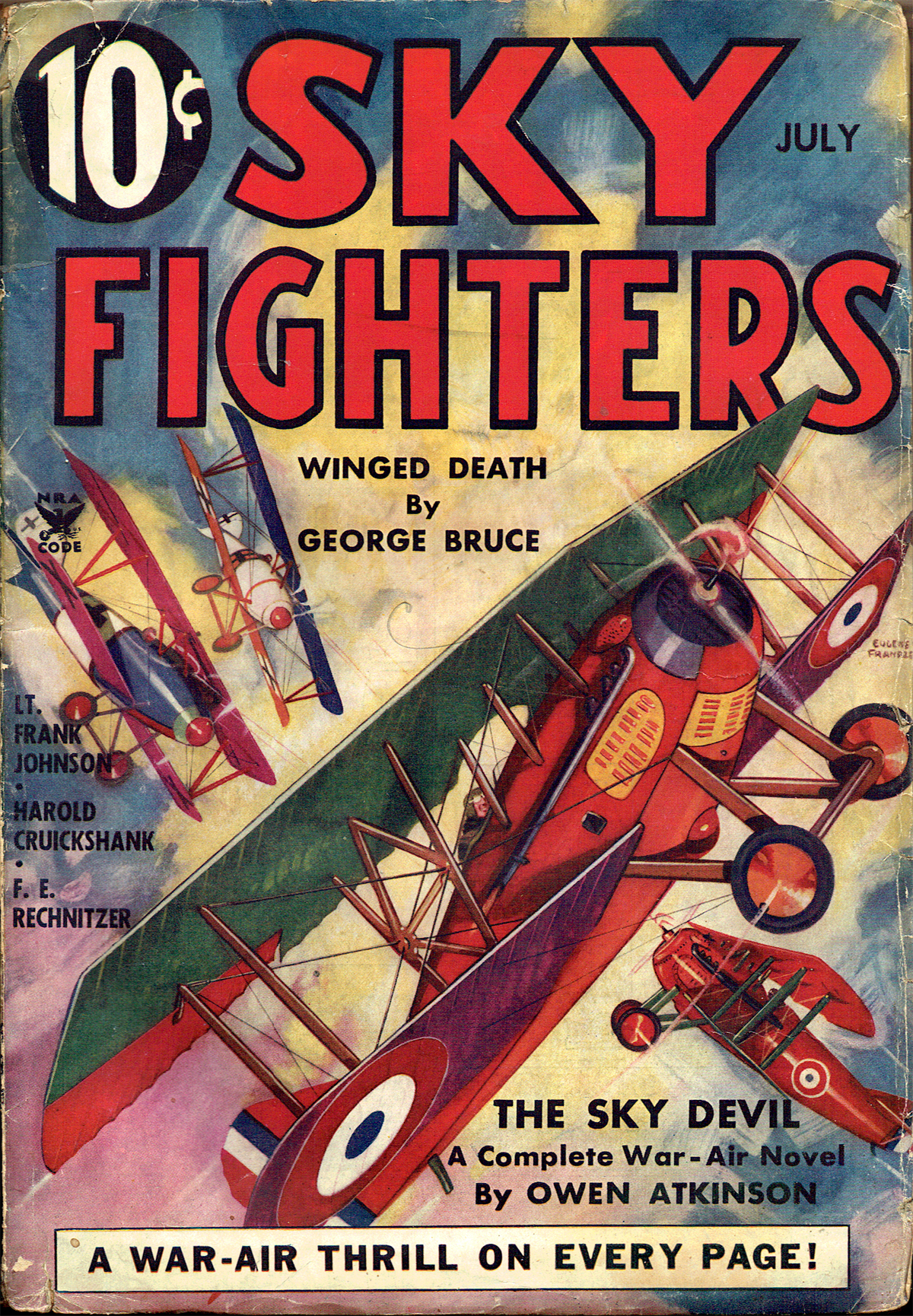
Sky Fighters, July 1935 by Eugene M. Frandzen
(The Ships on The Cover Page)
Next time, Mr. Frandzen features the Nieuport 27 and Junkers C.L.1!





